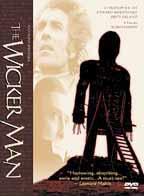Trying to prepare to teach tomorrow's classes, I have been depressed all day about a city that I knew only as a visitor. This Washington Post writer has me beat, of course:
For those of us lucky enough to have come of age in New Orleans -- even more than for the tourist who falls for her instantly -- the decadent majesty of the city is like a forbidden love. You want desperately to explain the depths of your enchantment, but you know in your heart that others will acknowledge it merely as an easy infatuation or a passing fling. You know they will never awaken at night drunk on the coffee-and-banana fragrance of her docks or the beery sweat of her pre-dawn streets or the humid hum of her streetcar summers. How could they ever understand the depth of your passion?
I find myself going here compulsively.
Did the Tarot card readers of Jackson Square keep turning up The Tower all last week? (If they did not, someone will create a fictional work in which they did.)
M.'s and my experience of being refugees for all of four days last July did make me more sensitive to scenes of people fleeing their homes. In this case, though, it would not surprise me if people from southern Louisiana and Mississippi will probably still be living in tent cities a year from now, a semi-permanent class of refugees.
[A]ccording to Shea Penland, geologist and professor at the University of New Orleans. "When we get the big hurricane and there are 10,000 people dead, the city government's been relocated to the north shore of Lake Ponchartrain, refugee camps have been set up and there $10 billion plus in losses, what then?" he asks.
Interestingly, that was published five years ago.
UPDATE: God punished New Orleans because it was a wicked city, just in case you were wondering. (Link from Andrew Sullivan.)

 Even though it was billed as a horror film, and even though no one whom I knew ever endorsed the ending, the 1973 movie
Even though it was billed as a horror film, and even though no one whom I knew ever endorsed the ending, the 1973 movie 

